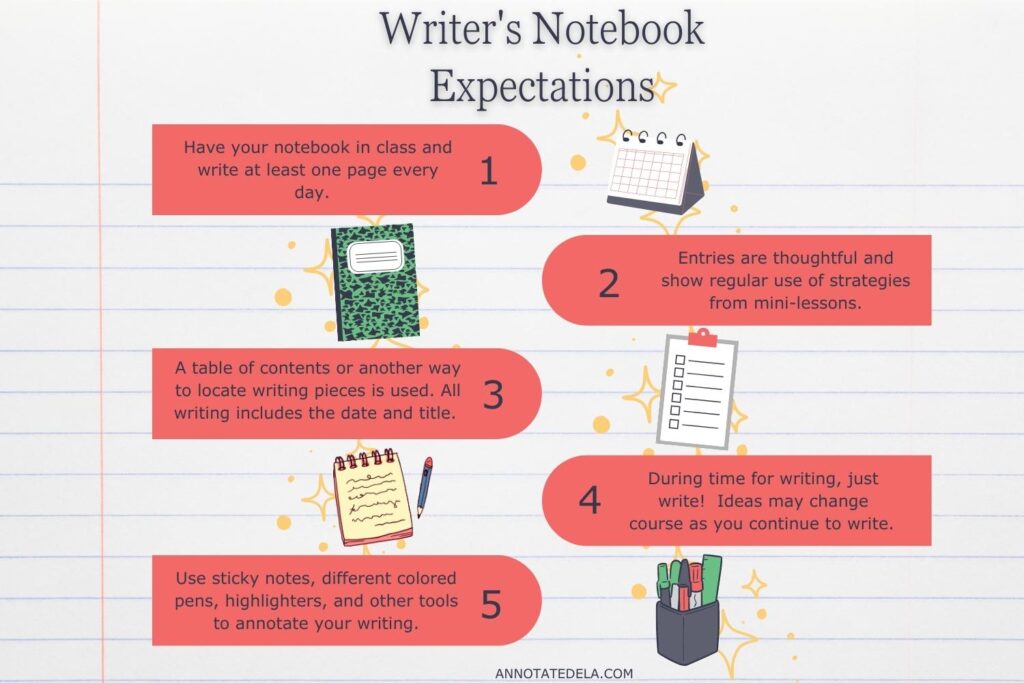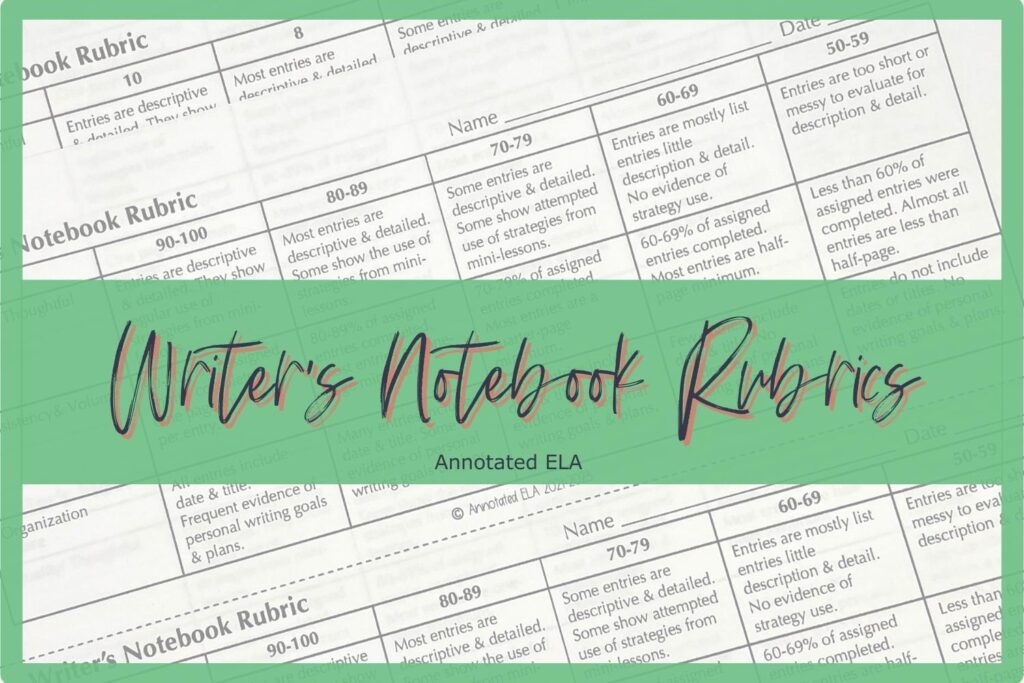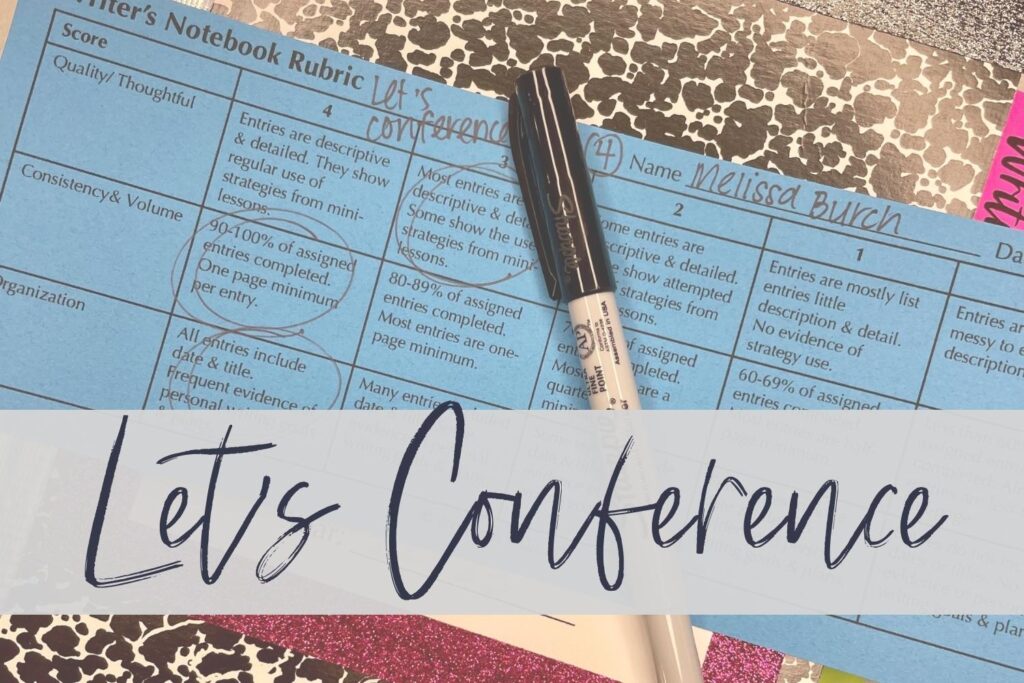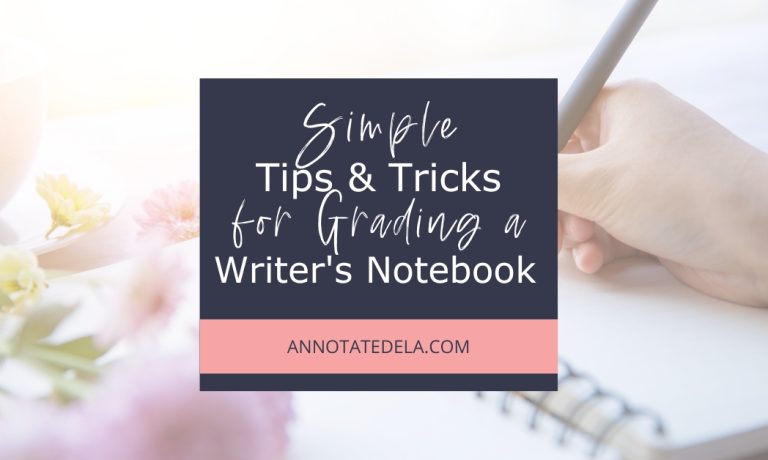Grading a writer’s notebook can be a challenging, but rewarding task for an educator. Thinking critically about what to include in the grade, and how to assess student writing can help foster more meaningful growth for each student. Here is an in-depth guide to help you confidently and effectively grade writer’s notebooks.
Establish Clear Criteria and Expectations
It’s important to establish clear criteria and expectations for the notebook. This helps students understand which aspects of their writer’s notebook need improvement and what needs to be done to get a good grade.

Setting expectations as a group motivates students and lets them feel they have a voice in the process.
Suggestions for expectations:
- Have notebooks every day
It is important to consider having students keep their notebooks with them as an expectation. Students should always be looking for writing topics and inspiration happens when we least expect it.
- Entries are thoughtful and show use of writer’s craft
An expectation for thoughtful writing is another important point to consider. Have the conversation about what thoughtful writing means and what it might look like. Students should be engaged and excited about the topic. Not to mention trying new strategies in their own writing. The notebook is a place for experimentation and to try new writing techniques.
- Notebook should have a system for organizing entries
Not only does this make it easier for you and the students to find entries, but it teaches students organizational strategies.
- Just write
Whe it is time to write, just write. This can be more difficult than it sounds, but having the expectation to keep writing will generate new ideas, increase writing endurance and stamina, and build confidence.
- Annotate writing
Having students go back and review what they have written is another way to generate ideas, revise, and see topics through a fresh lens. Using sticky notes, colored pens, and highlighters to mark their writing is powerful. They can celebrate success and make goals for improvement.
Setting expectations from the beginning will ensure success.
Use Rubrics and Checklists When Grading a Writer’s Notebook
When it comes to grading a writer’s notebook, a rubric or checklist can help you determine which areas need improvement and better define criteria for success.
This can be tricky. Should you leave detailed feedback on the writing or quick notes with a follow up conference when grading the notebook?
Leaving detailed feedback takes more time and students may not always act on the feedback. It is my practice to use the notebook as a place to check engagement in writing, endurance and stamina, and use of new strategies. It is important to leave a note of feedback that celebrates and suggests an opportunity to grow.
The rubric and the notebook are a starting place for conferences, so giving a “grade” on the notebook is a way to check in and make notes for future meetings with the student. One of the expectations in class is that the students will just write, so I am checking that they are doing that – it should not be perfect!
One more tip for the rubric. The writing notebook is a sacred place where students should feel comfortable trying new strategies – they will succeed and they will fail, but it should be a place where that is allowed. So the rubric, for me and my students, is a participation grade. It’s a way to hold the students accountable for trying and being an active participant in their writing journey.

Give Constructive Feedback When Grading a Writer’s Notebook
One of the most important aspects of assessing a writer’s notebook is to provide feedback that will help them grow as writers. It pays off to take a few extra moments to look through their work and make notes, but I cannot stress this enough – the notebook is a sacred space to try the writer’s craft.
My suggestion is to make notes and keep those notes for yourself too. Scheduling writer’s conferences with students and small groups is a great time to review and teach the skills the students need.
After spending time establishing a writing community and building a relationship, leaving more detailed feedback will make a bigger impact because the student will have tools to act on the feedback. The student will also have motivation to act on the feedback because the student is engaged in the writing process.
By providing thoughtful guidance and constructive criticism in addition to your grading criteria, you can motivate students to aim higher each time they submit entries. This will foster an environment of learning and growth in the classroom and encourage greater student participation.

Writer’s notebooks are an essential tool for a writing classroom community. For the teacher, grading a writer’s notebook can become a dreaded pile to grade, but with some small considerations it can become a task that is quick and easy.
If your students are keeping a writer’s notebook, please remind them when you are grading a writer’s notebook, you will have to report any entries that suggest they may harm themselves or others. Teachers must be regularly checking notebooks.



